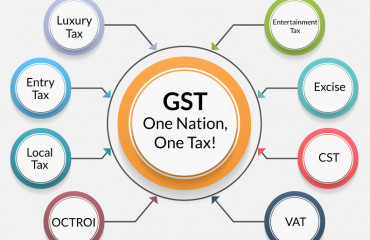
NEW DELHI : Generation of e-way bills, which are needed to ship goods within and across states, eased a notch in April, suggesting that Goods and Services Tax (GST) collections this month could be lower than the previous month’s record high.
NEW DELHI : Generation of e-way bills, which are needed to ship goods within and across states, eased a notch in April, suggesting that Goods and Services Tax (GST) collections this month could be lower than the previous month's record high.
Data from GSTN, the company that processes GST returns, showed that 75.2 million e-way bills were generated in April, lower than the 78.1 million raised in March. However, the number is still the second highest since November 2020.
Businesses will pay GST for April transactions in May.
March had witnessed a spurt in e-way bills as companies pushed inventories at the end of the financial year to meet their targets, leading to a record ₹1.68 trillion in GST revenue collections. The revenue to be collected in May for the transactions in April could reflect the slight moderation seen in e-way bill generation, which is taken by analysts as a high frequency indicator of economic activity.
Economic recovery and improved tax compliance have helped boost revenue collection in the recent past. It remains to be seen how the RBI's increase of its main policy rate by 40 basis points to 4.40% to tame inflation will impact consumption. RBI had earlier flagged that private consumption's share in gross domestic product is still a tad below pre-pandemic levels, going by FY22 estimates.
The S&P Global India manufacturing purchase managers' index had shown earlier this month that the manufacturing industry in India had a strong start to FY23, posting a marked expansion in new orders and production. PMI is based on a survey of 400 businesses, while e-way bill data is based on actual transactions.
Rising from 54 in March to 54.7 in April, the seasonally adjusted PMI highlighted a solid and faster improvement in operating conditions across the sector, according to S&P Global. Growth gathered momentum in the intermediate and capital goods segments, but there was a slowdown at consumer goods makers, it said on 2 May.
GST collections were less impacted during the second wave of the pandemic in the first half of FY22 than during the first wave, which had severely depressed revenue in the first half of FY21. Revenue receipts significantly improved in the latter half of FY22 as the economy recovered and pent-up demand drove consumption. Experts also say that in addition to the anti-evasion measures taken by the tax authorities, a surge in commodity prices is also having an impact on GST revenue collections.
Brisk goods shipments across the country also helped truck rentals in April. Greater momentum in wheat and cereal harvesting and higher cargo movement from factories, coupled with improved consumer spending during the peak marriage season helped truck rentals in April despite a jump in diesel prices, the Indian Foundation of Transport Research and Training said. The growth in GST revenue collection in recent months highlights the revenue collection potential the new indirect tax system offered by leveraging technology-linked compliance requirements.
